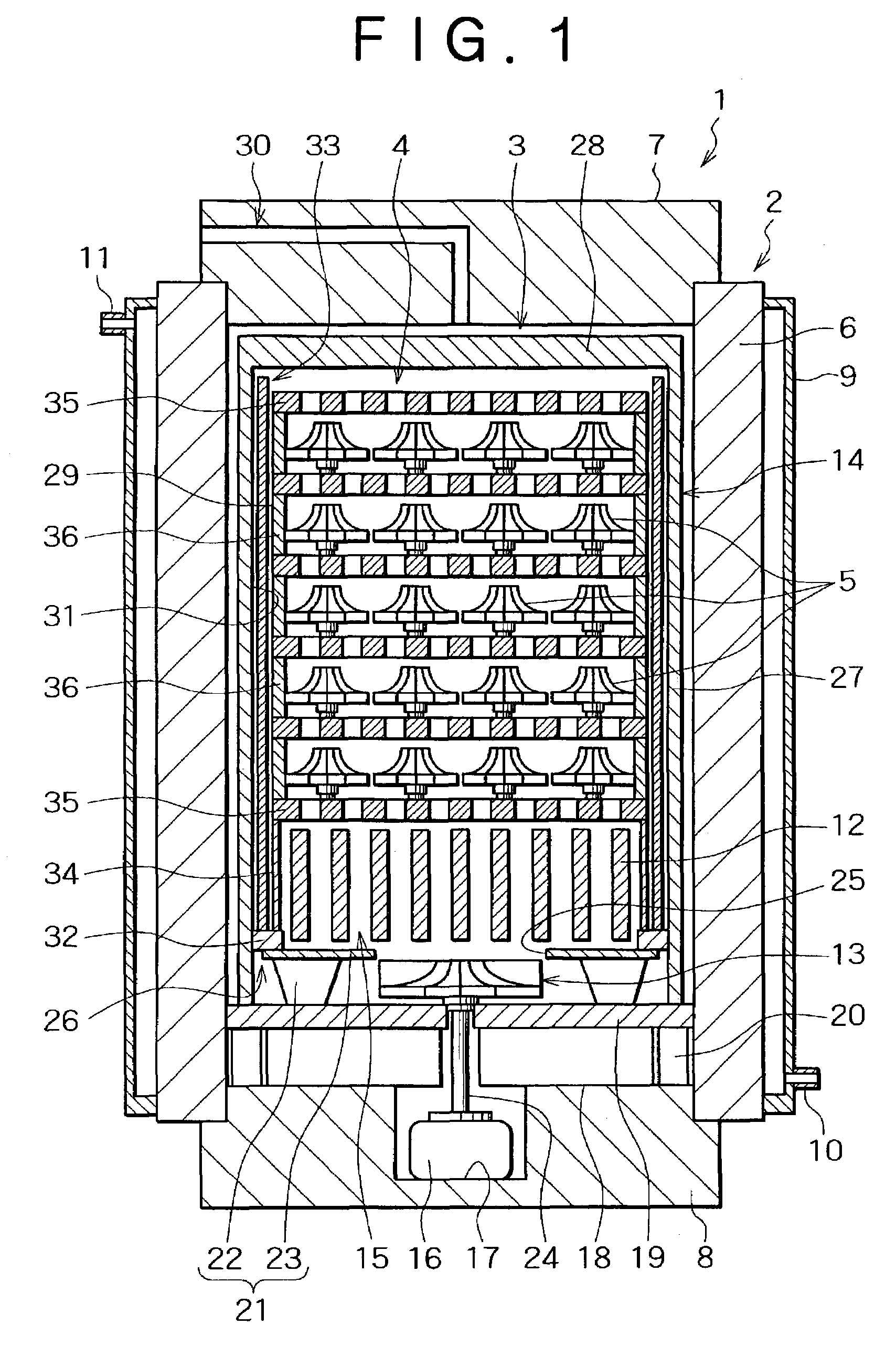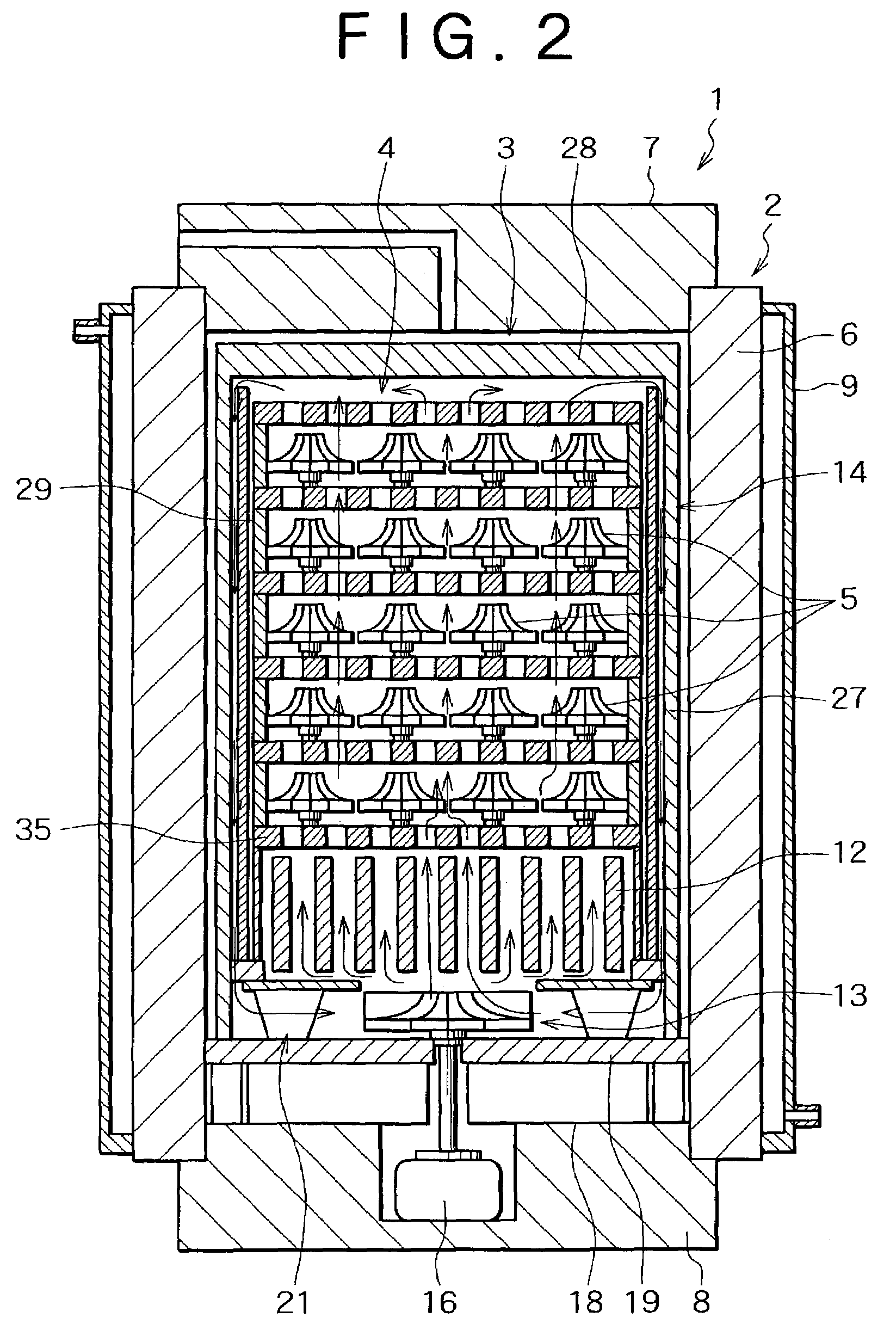Hot isostatic pressing apparatus
a technology pressing chamber, which is applied in the direction of auxillary shaping apparatus, shaping press, butter production, etc., can solve the problems of high treatment cost, long cycle time, and high utilization rate of hot isostatic pressing, and achieve the effect of efficiently reheating workpieces
- Summary
- Abstract
- Description
- Claims
- Application Information
AI Technical Summary
Benefits of technology
Problems solved by technology
Method used
Image
Examples
second embodiment
[0110]FIGS. 6 to 8 illustrate the present invention.
[0111]In an electric furnace 3 according to this second embodiment, as shown in FIG. 6, the convection cylinder 29 used in the previous first embodiment is not used, but a cylindrical support member 36 serves as a pressure medium gas flowing guide.
[0112]A heat insulating structure 14 has a bottom wall 45 which closes a lower-end opening of a body portion 27, while an upper wall 28 which closes an upper-end opening of the body portion 27 is constructed so that it can be opened and closed.
[0113]A base heater 12 and a fan 13 are disposed above the bottom wall 45 in the interior of the heat insulating structure 14 and is supported by the heat insulating structure 14.
[0114]A motor 16 for driving the fan is disposed below the bottom wall 45 in the heat insulating structure 14 and an output shaft 24 of the motor 16 is connected to the fan 13 through the bottom wall 45 in the heat insulating structure 14, the motor 16 being supported by th...
PUM
| Property | Measurement | Unit |
|---|---|---|
| temperature | aaaaa | aaaaa |
| temperature | aaaaa | aaaaa |
| height | aaaaa | aaaaa |
Abstract
Description
Claims
Application Information
 Login to View More
Login to View More - R&D
- Intellectual Property
- Life Sciences
- Materials
- Tech Scout
- Unparalleled Data Quality
- Higher Quality Content
- 60% Fewer Hallucinations
Browse by: Latest US Patents, China's latest patents, Technical Efficacy Thesaurus, Application Domain, Technology Topic, Popular Technical Reports.
© 2025 PatSnap. All rights reserved.Legal|Privacy policy|Modern Slavery Act Transparency Statement|Sitemap|About US| Contact US: help@patsnap.com



